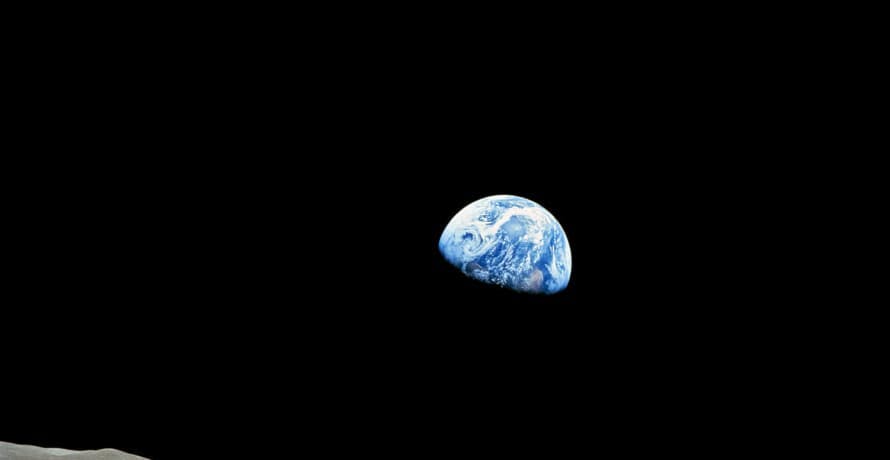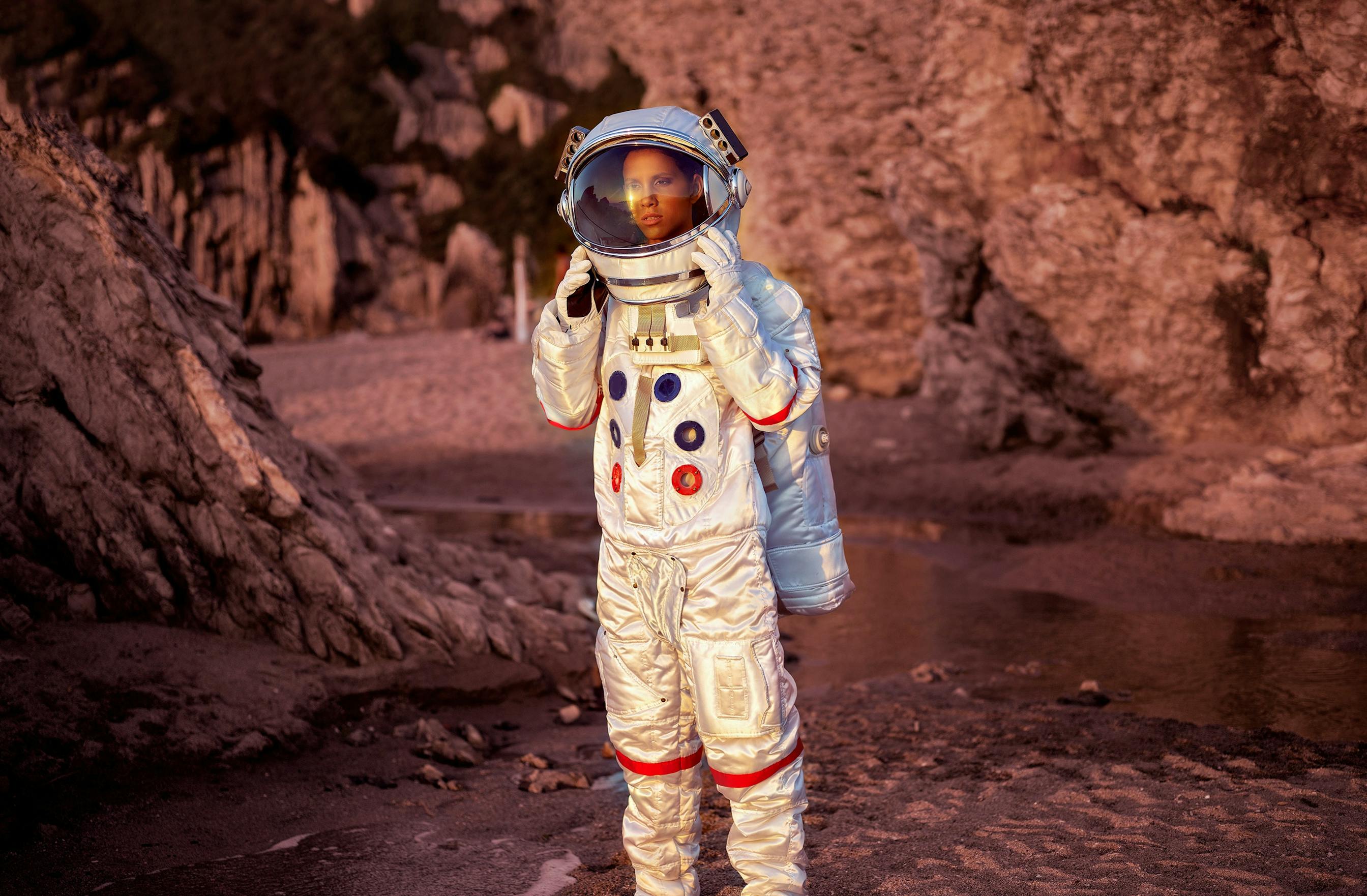ESG / CSR
Industries
Why is Space Tourism a Risk to the Climate?



As summer approaches, many are starting to think about their favorite travel destinations: maybe to New York, Paris, London, or Rome – but what about space tourism and tourism beyond earth orbit?
There have been talks for years about space tourism becoming a real thing, where just as you’d hop on a flight over to Europe – you could also hop into a rocket and see space as a tourist destination just as you would with anywhere else on our own planet.
However, given the environmental impact of both rocket launches and satellites left behind beyond our atmosphere due to space exploration – it is valid to question if space tourism poses a risk to the climate just as other space endeavors do. There are varying attitudes towards space tourism and the space tourism industry.
👉 What does space tourism entail exactly, and why could it be harmful to the environment – despite the fact space tourism would be an effort to decrease the current environmental impact to be had on Earth?

What is space tourism?
Space tourism is when humans travel to space solely for their own personal enjoyment rather than with a specific purpose or mission in mind. Therefore, space tourism can be viewed the same way anytime someone takes a vacation or “holiday” to somewhere that they don’t live or haven’t been before – as space tourism is the act of going to space for pleasure instead of business the way most astronauts do.
💡 In fact, commercial flights to outer space may be available as soon as late 2024 – however, it isn’t as affordable as a trip to the Eiffel Tower or Big Ben may be, with a ticket to space being expected to cost around half a million dollars.
There are likely to be two different types of space tourism: suborbital and orbital. Suborbital space travel is when the spacecraft meets the border between space and Earth without going into full orbit, and as a result – is often the cheaper form of space tourism. Companies offering suborbital space tourism include Blue Origin and Virgin Galactic.
👉 The main difference between these two types of space tourism is the length of time tourists are to spend in space and the difference in price – as orbital space travel is likely to cost millions of dollars with private companies as opposed to a few hundred thousand dollars with suborbital space travel.
These two types of space tourism aren’t all that are on the cusp of commercial availability, but also a commercial space flight created by a company called, “WorldView” – which will take those interested in space tourism high above Earth for space-like views of world famous destinations such as the Great Barrier Reef in Australia or the Grand Canyon in Arizona.
Space tourism industry discoveries
Here are just a few of the discoveries made as a result of human space travel and space tourism including orbital endeavors:
- Mankind explored the solar system on April 30 2013
- Learning about lightenning in outer space aboard (original on October 2)
- Allowing the first space tourist (Dennis Tito) to visit the ISS for 7 days
- Inspiring the development of a reusable suborbital launch system
- Allowing new records to be set, such as with Anousheh Ansari who became the first female space tourist and the fourth space tourist in the world
As new technologies continue to be developed, space tourism will continue to expand for commercial purposes – and the interest in long-term space tourism will rise as does the threat of climate change.
💡 Ultimately, from space.com, from the original space tourists who landed Apollo 11 on the moon, to the new attitudes towards space tourism subsection – we've come a long way in the development of creating new experiences for a future space tourist.
Space Tourism Programs Comparison
| Program | Company | Description | Key Features |
|---|---|---|---|
| Blue Origin | Blue Origin | Founded by Jeff Bezos, Blue Origin offers suborbital spaceflights through its New Shepard rocket. |
|
| Virgin Galactic | Virgin Galactic | Founded by Richard Branson, Virgin Galactic provides suborbital flights aboard its SpaceShipTwo spaceplane. |
|
| SpaceX | SpaceX | Founded by Elon Musk, SpaceX offers orbital flights and has plans for lunar and Mars missions. |
|
| Space Adventures | Space Adventures | A private company that offers space tourism experiences in partnership with Russian space agency Roscosmos. |
|
| Axiom Space | Axiom Space | A private company aiming to build the world's first commercial space station and provide space tourism services. |
|

Why the interest in space tourism and settling in space?
It’s no secret that over the past century, ever since the rise of the industrial revolution, human activity has skyrocketed the amount of greenhouse gasses in the atmosphere and that emissions have grown out of hand. As a result, there has been growing interest in launching an international space station and to toggle tourism beyond Earth – such as with a journalist in space program and commercial space launch amendments.
💡 In fact, according to the Intergovernmental Panel on Climate Change – the number one cause of excessive emissions is due to accelerated human activity: such as by mass production, urbanization, or the development of new technologies.
Due to the fact that we have nearly destroyed the planet we were all born on, many have become interested in settling on other planets in our solar system – such as with talks of humans settling on Mars. While Earth and Mars are considered to be sister planets due to their similar make-up and terrain surface, the problem with mars is that while it has an atmosphere like Earth does – only 0.13% of the air on Mars is oxygen, meaning humans would still need space suits to be able to roam about free and outside. Still, the interest in the possibility of space tourism and settling on other planets is intriguing to both the average person and scientists alike in the midst of our home planet dying.
👉 However, running away from the problems we've created as humans on Earth with an orbital space tourism subsection or looking to build the global space tourism market or won't prevent future havoc to the planet we've already been beating up this entire time.

Why does space tourism pose a threat to the climate?
Many are intrigued by what lies beyond beyond Earth orbit subsection and our own atmosphere, which has already been demonstrated by the increased efforts to explore outer space throughout the last century – with new high tech satellites and rockets being launched to outer space specifically to monitor the activities beyond our stratosphere.
However, the problem with many of these rockets, satellites, and rovers is that they ultimately contribute to space junk – which is sometimes also called space debris, which is when various scientific elements that are sent to space for exploration and further research on planets, stars, galaxies never return to Earth and end up floating in outer space and remaining subject to excess emissions and toxic substances to be released and relayed back to our own atmosphere.
The space crafts necessary to conduct both suborbital and orbital space exploration and travel for space tourism are subject to excessive emissions and even black carbon – just like other rockets that are sent to space. Black carbon is the fine soot or dark matter that is released from vehicles, most commonly seen from cars on the street – but can also be released from space rockets, and even those to be used for space tourism.
👉 The problem with black carbon is that it can provoke lung disease, infiltrate the atmosphere and the ozone layer, can harm ecosystems, and even impact agricultural practices all while aggravating climate change.
Therefore, space tourism, especially the kind of space travel that will take days to complete – can be a massive threat to the climate as it will emit an unforeseen amount of black carbon and other emissions required to proceed with a rocket launch.

Is space tourism more detrimental to the climate than aviation travel?
One of the problems with space tourism is that it has the potential to be even more detrimental to the environment than traditional tourism and air travel travel, which has constantly been kept behind the curtains of those trying to push out space tourism and general commercial space travel to toggle attitudes towards space.
The problem with rocket launches and the space crafts that will be used for space tourism is that they will emit black carbon directly into the stratosphere – something that a typical aircraft for commercial flying won’t do as it never flies high enough. Granted, there is still strength in numbers, and there is still more air travel via aviation than there are with space crafts, but if space tourism is to kick off and we are able to toggle orbital space tourism – it could prove more problematic to the environment than typical airplanes already are.
👉 Ultimately, the black carbon that will be produced by the space crafts necessary for space tourism will pollute the atmosphere at a faster and more dangerous rate than traditional aviation travel will – making commercial space tourism more menacing than traveling the Earth.

Is there a way to develop space tourism without harming the climate?
In a similar way to travel via airplane on Earth, space tourism and any effort to toggle sub orbital space is bound to create excess emissions. This is because in a similar sense to how all businesses are bound to create emissions, any efforts to launch a space shuttle or efforts in developing suborbital space tourism are bound to create an environmental impact.
However, there are methods that can be taken to reduce the environmental impact that could be had on space tourism.
Green Rocket Launches
💡 In order to do this, the space industry should seek to develop a cleaner source of energy to develop more sustainable rocket fuel – such as with biofuels that would avoid hefty amounts of black carbon from infiltrating the atmosphere.
Reusable Rockets
We re-use planes all of the time – why not space rockets, too?
Reusable rocket technology, such as with the SpaceX Falcon 9, can help to avoid the space junk created by rocket launches the waste associated with space launches and can help to reduce our environmental footprint created by any international space station crew.
Improve Efficiency
Efforts towards developing suborbital space programs should include any space station seek new technologies such as ion thrusters or nuclear thermal propulsion to improve the energy efficiency of their launch rockets. If these resources are inaccessible, lightweight materials can also help to reduce emissions and intrigue anyone strongly opposed space tourism.
Carbon Offsetting Programs
While carbon offsetting programs can't and shouldn't be used as a replacement to developing ways to reduce emissions in space programs, it can help to compensate for the extra emissions these space tourism companies may find more challenging to reduce.
New Regulations and Policies
New environmental regulations should be developed in line with international governments, such as with Germany, Bulgaria, Hungary, Romania, and more to determine which sustainable practices are most approachable across the space tourism industry.
In addition to this, we can provide new incentives to make rocket launches and space tourism greener – such as at the Generation Suborbital Researchers Conference. This can help to pinpoint the exact barriers in a suborbital launch system specifically and what can be done so the space industry could soon play its part in the fight against climate change.
Reduce Space Junk
Another way to encourage space tourism without risking the climate is to aim to upcycle old space junk to be used for the bodies of new space crafts to be used for space tourism. There are already thousands of old satellites wandering around in space, and if an effort was made to do a gigantic space clean-up, it could not only help to avoid the environmental impact of space junk – but allow for refurbished space crafts that could be used for space tourism.
If you’re interested in space tourism, there’s no need to suppress your curiosity – but it may be worthwhile putting your money to discovering what you have yet to see on Earth and give the space industry more time to develop a more sustainable way for space tourism to take flight.
What about Greenly?
If reading this article about space tourism could be a risk to the climate has made you interested in reducing your carbon emissions to further fight against climate change – Greenly can help you!
Space tourism, even if it is somehow adjusted to become green or sustainable, space tourism isn’t the only surprising thing that could provoke environmental damage. Many of those can be difficult to discover, and Greenly’s got you covered – click here to book a demo and learn more about how we can help you to measure and reduce your various scope emissions.
Greenly can help you make an environmental change for the better, starting with a carbon footprint assessment to know how much carbon emissions your company produces.




